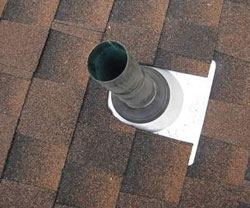Loft Ventilation Problems
If you have a loft area in your home or a building you own, it’s important to know about common problems with this area, as well as what you can do to avoid having those problems:
Issues with Mold
Because mold can grow in ares with lots of moisture, it’s a problem that’s commonly associated with poor loft ventilation. Although it commonly goes along with this issue, that doesn’t mean it’s something you want to have happen to you. There are two significant reasons why no home or building owner wants to discover mold growth. The first reason is because mold can actually cause structural damage. This is the result of its ability to quickly spread through an area. As it spreads, it overtakes everything in its way.
The second reason is mold can actually cause health problems for anyone who lives or works in an area where it’s growing. The main complications it can cause are making it more difficult for people to breathe when they are indoors. Symptoms of this type of issue include:
- Watery eyes
- Runny nose
- Coughing
As if those reasons weren’t enough, another factor that makes mold such a frustrating problem is how difficult it is to remove mold once it has started to grow. Although there are professionals who specialize in removing mold, unless the underlying ventilation problem is addressed, there’s a high probability of mold starting to grow again.
Problems with Insulation
If you already have vents in your loft, you may assume that there’s no reason for you to worry about any problems with ventilation. The same is true if you don’t currently have vents but opt to get them installed. While vents should take care of your loft’s ventilation, there is still one issue that can cause this to not be true. This issue is if insulation partially blocks or completely covers any of the vents in your loft. If this happens, chances are you will experience problems with moisture. To keep this from happening, make sure rolls of insulation aren’t placed over vents, as well be careful not to blow any insulation into vents if you decide to add any to your loft.
Incorrect Ventilation Methods
Once you realize the importance of proper ventilation in your loft, it’s possible for your eagerness to address this issue to get the best of you. If you simply decide that adding as much ventilation as possible to your loft is the best way to prevent future problems, chances are you’ll actually end up causing more problems for yourself. The reason is adding more vents than you truly need can cause the overall impact of ventilation to be less efficient. To prevent yourself from inadvertently sabotaging the effectiveness of your ventilation, be sure to stick to adding 1 square foot of ventilation for every 300 square feet of loft space. The other ventilation mistake you want to avoid is using the wrong type of vent. For example, while gable vents are a good choice for a wood roof, soffit vents or another type of vents are a better choice for roofs made from a different material.

Categories
- Home
- Loft Ventilation Information
- DIY Loft Ventilation
- Loft Insulation and Ventilation
- Loft Ventilating Roof Space
- Loft Ventilation and Condensation
- Loft Ventilation Building Regulations
- Loft Ventilation Costs
- Loft Ventilation Ideas
- Loft Ventilation Installation
- Loft Ventilation Plans
- Loft Ventilation Problems
- Loft Ventilation Tips
- Loft Ventilation Companies
- Loft Ventilation Products
- Types Of Loft Ventilation
